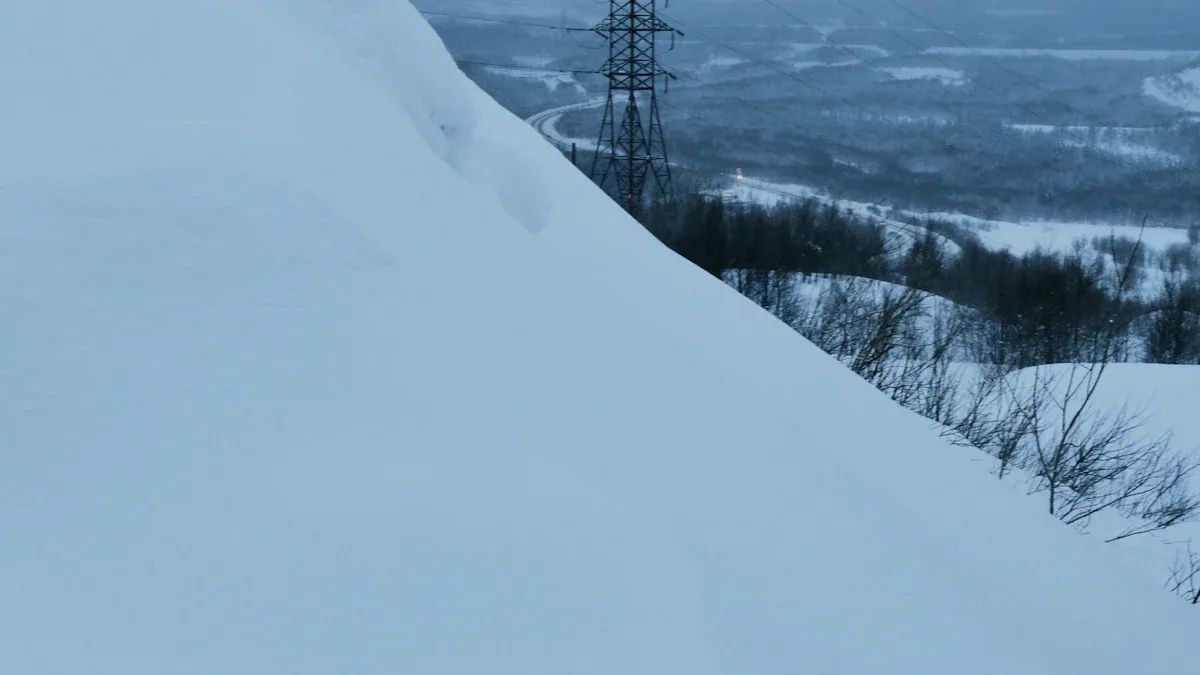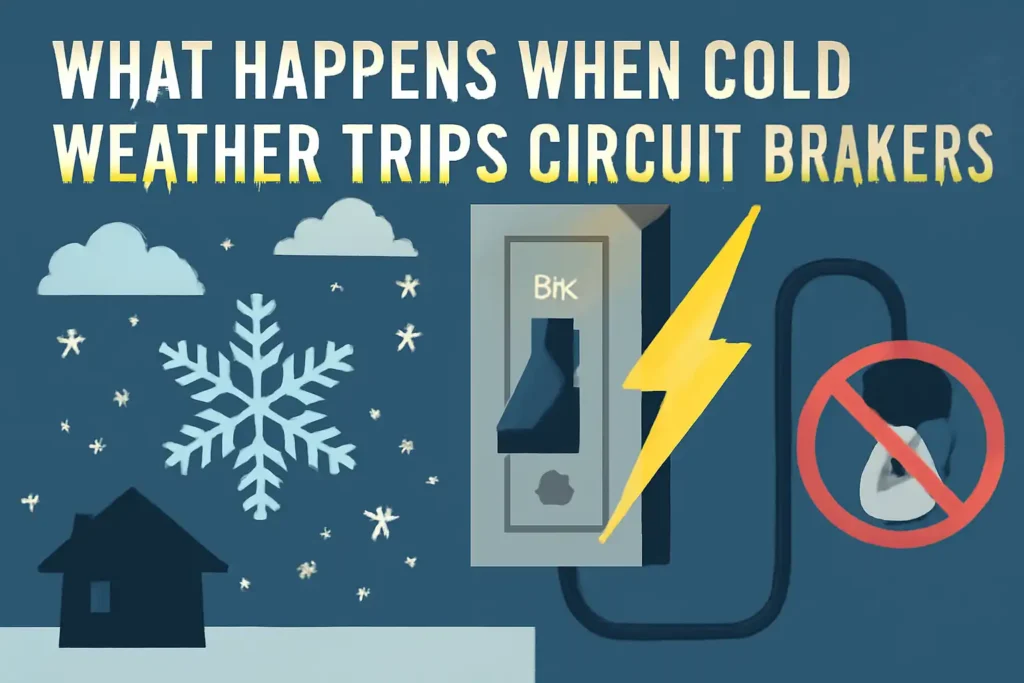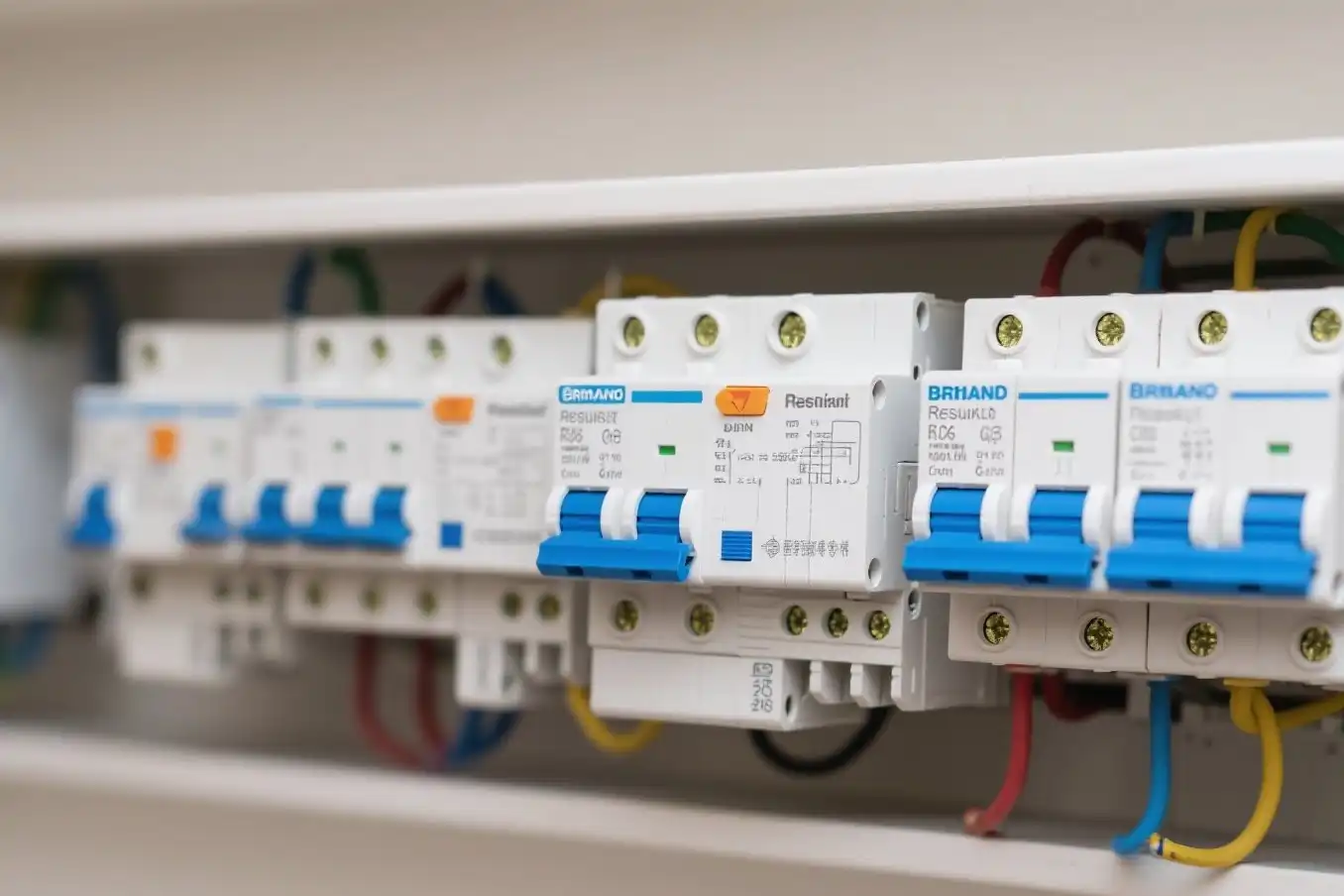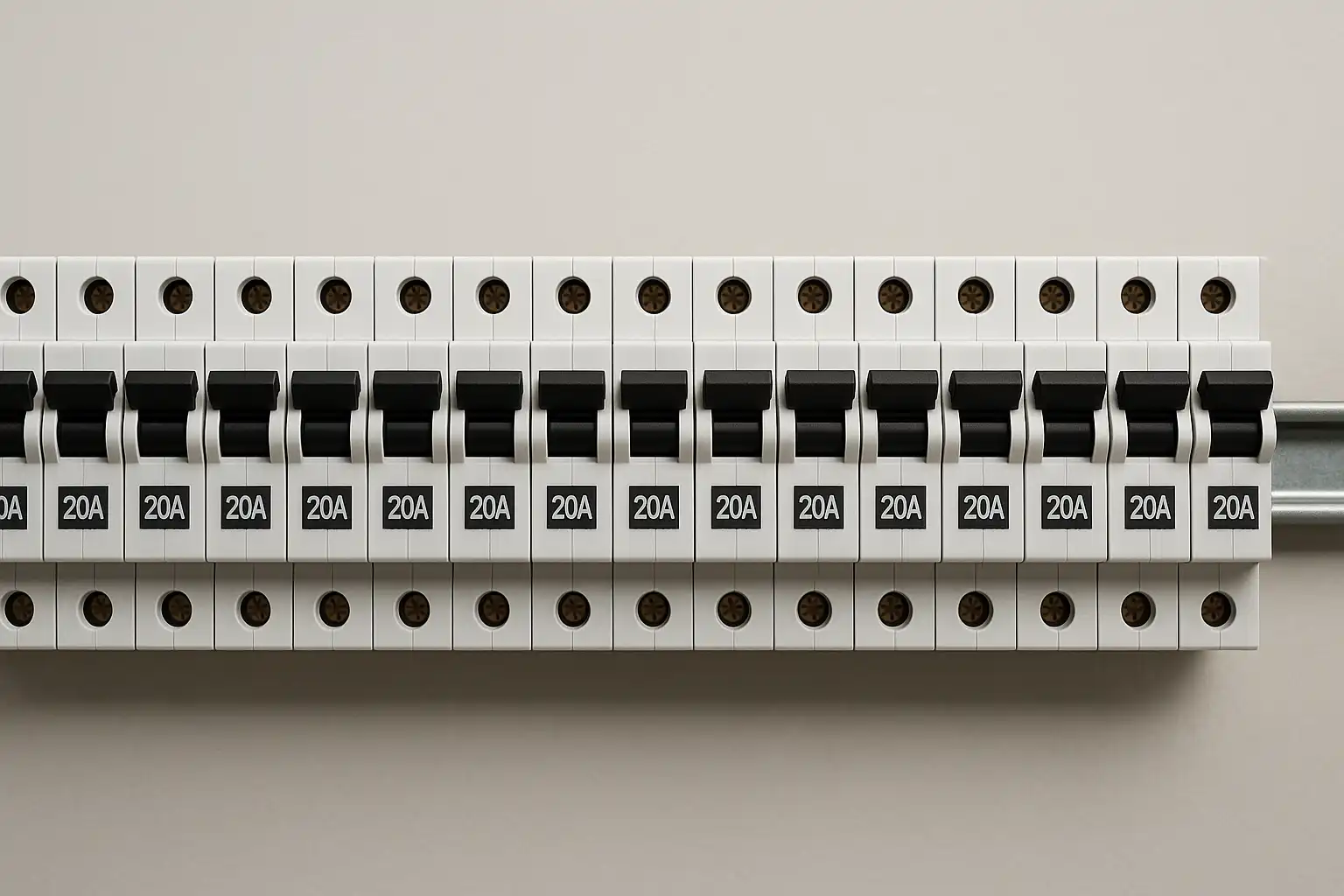Cold weather causes circuit breakers to trip for many reasons. When temperatures drop, people tend to use more electricity for heating, which can stress your electrical system. Additionally, cold air can lead to moisture forming on wires, resulting in shorts. Freezing temperatures can also cause parts inside breakers to shrink, making them weaker. All these factors combined can lead to sudden power outages.
Understanding how cold weather causes circuit breakers to trip can help you prevent issues and ensure safety.
Key Takeaways
- Cold weather makes people use more electricity for heat. This can overload circuits and trip breakers.
- Water from cold air can gather on wires and cause short circuits. This leads to breaker trips.
- Freezing weather can damage breaker parts, making them trip more often.
- Check old circuit breakers often and replace them if needed. This helps them work well in winter.
- Use power on different circuits to stop one from overloading.
- Close cracks and use machines to remove moisture near wires.
- Get regular check-ups for your electrical system to find problems early. This keeps it safe.
- Learn how to reset a breaker safely. Call an expert if you need help.
How Circuit Breakers Protect Electrical Systems
The Function of Circuit Breakers
Circuit breakers are important for keeping your home safe. They stop electricity when something is wrong. For example, if too much electricity flows, the breaker shuts it off. This stops overheating, which can cause fires or harm your devices.
Here’s how they work:
- Circuit breakers check that electricity stays at safe levels.
- If there’s too much power or a short circuit, they stop it.
- Inside, metal parts and a coil work to break the circuit.
- They also stop sparks, which can cause more damage.
By cutting power during problems, circuit breakers protect your home and devices.
Key Components and Their Roles
Circuit breakers have parts that work together to keep things safe. Each part has a job:
- Protection: The breaker stops power during problems like overloads or shorts. This keeps your devices safe and lowers fire risks.
- Switching: You can use breakers to turn off power in certain areas. This helps with repairs or maintenance without shutting off everything.
- Monitoring: Some breakers have alarms or meters. These help you check your system and find problems early.
Knowing these parts shows how breakers keep your home safe and working well.
How Circuit Breakers Respond to Electrical Issues
When there’s a problem, circuit breakers act fast to stop damage. They notice when electricity gets too high and shut it off. This happens in three steps:
- The breaker finds the overload or problem.
- It opens its parts to stop the electricity.
- This stops fires and protects your devices.
This quick action keeps your home safe during surprises. Learning how breakers work helps you see why they’re so important.
Cold Weather Causes Circuit Breakers to Trip
More Electricity Used for Heating Devices
Cold weather makes people use heaters to stay warm. Space heaters, electric blankets, and heat pumps need a lot of power. This extra electricity can overload your system and trip breakers. Studies show heating can raise hourly electricity use by 144%. In areas with heat pumps, peak demand can grow by 37%. These big jumps in power use can cause sudden outages.
Winter weather also affects power lines and transformers. Freezing conditions can damage them, leading to outages. When power comes back, the surge can trip breakers at home. This shows how cold weather stresses your system with heating devices and changing power levels.
Moisture on Electrical Parts
Cold air often brings water that collects on wires. Condensation on wires or breaker parts makes electricity flow too easily. This can cause short circuits or tripped breakers. Moisture also weakens insulation, making it less protective. Studies show wet insulation raises the chance of failure under normal power levels.
Even small amounts of water can harm electrical parts over time. Research on solar panels shows moisture can cause rust and higher resistance. Though this study is about solar panels, the same happens in home systems. Keeping wires dry helps prevent breaker trips during cold weather.
Freezing Temperatures Affect Breaker Parts
Freezing weather can change how breakers work. Cold makes metal parts inside shrink, weakening their function. This makes breakers trip more easily, even under normal power use. Over time, freezing temperatures can wear out these parts, making them less reliable.
Cold also thickens lubricants inside breakers. This creates friction between moving parts, slowing their response to problems. If breakers react too slowly, they might trip for no reason or fail during real issues. Knowing how cold affects breakers explains why they trip more in winter.
Additional Factors That Cause Circuit Breaker Tripping
Aging or Worn-Out Circuit Breakers
Circuit breakers get weaker as they get older. Over time, their parts wear out and stop working well. An old breaker might trip more often, even with normal electricity use. This happens because its parts can’t handle the current properly anymore.
Old breakers can also rust, which makes them work poorly. Rust might cause them to trip when they shouldn’t or fail to trip when needed. If your home has an old electrical panel, check the breakers often. Replacing old breakers keeps your system safe and working right.
Loose or Faulty Electrical Connections
Loose or bad connections in your wiring can cause big problems. If wires aren’t tight, they might create short circuits. A short circuit happens when a hot wire touches a neutral wire. This makes too much electricity flow, tripping the breaker. It can also cause sparks or smoke, which are dangerous.
Bad connections can happen from poor care or moisture. Moisture can cause rust, making connections weaker and more likely to fail. Mistakes during repairs or installations can also stop breakers from working right. Tight and correct connections help avoid these problems.
Overloaded Circuits and Improper Wiring
Circuits overload when too many devices are plugged in. Each circuit has a limit for how much power it can handle. If you go over this limit, the breaker trips to stop overheating. For example, using a space heater and microwave on the same circuit can overload it.
Bad wiring is another reason breakers trip. If wires are installed wrong, they can cause ground faults. A ground fault happens when a hot wire touches a ground wire by mistake. This creates a power surge that trips the breaker. Hiring a skilled electrician to fix wiring problems keeps your system safe.
Tip: Labeling circuits helps you spread out power use and avoid overloads.
Preventing Circuit Breaker Trips in Cold Weather

Balancing Electrical Loads Across Circuits
Spreading out power use across circuits helps stop breaker trips. It keeps circuits from overloading, especially in winter when heaters need more power. Sharing electricity evenly makes your system safer and more reliable.
Here’s why balancing loads is helpful:
- Power stays steady, avoiding sudden changes or drops.
- Voltage and frequency stay normal, keeping devices safe.
- Less distortion protects sensitive electronics from damage.
Winter power needs show how balancing loads prevents outages. By spreading power use, your home stays powered without problems.
Tip: Write down which devices connect to each breaker. This helps you avoid plugging too many high-power items into one circuit.
Upgrading Aging or Faulty Circuit Breakers
Old breakers trip more often, especially in cold weather. Replacing them helps your system handle more power and work better. New breakers are stronger and less likely to trip for no reason.
Upgrading breakers also gives these benefits:
- You can plan repairs before a breaker fails.
- Fewer failures mean your system works longer and saves money.
- Ordering parts only when needed lowers costs.
If your panel is outdated, think about getting a new one. Modern panels stop frequent trips and make your home safer.
Addressing Insulation and Moisture Issues
Moisture and bad insulation can cause breaker trips in winter. Cold air makes water collect on wires, weakening insulation. This leads to electrical problems and trips.
A study shows moisture and heat can ruin insulation. Wet areas with strong electric fields often have insulation failures. This makes circuits less reliable, especially in winter.
To fix this:
- Seal cracks to keep water out of your home.
- Use dehumidifiers in damp places like basements.
- Check and replace insulation to keep circuits working well.
Keeping wires dry and insulated stops trips during cold weather.
Scheduling Regular Electrical Maintenance
Regular electrical maintenance helps keep your home safe. It makes sure circuit breakers work well and prevents problems. Inspections and tests stop risks like fires, outages, or damaged equipment. Maintenance is extra important in winter when power use goes up.
Why Regular Maintenance Is Important
Circuit breakers wear out over time. Dust, water, and old parts can make them weaker. Without care, these problems can cause frequent trips or system failures. Preventive maintenance keeps breakers reliable and safe. It also saves money by stopping big repairs later.
Tip: Plan checks based on the breaker type and location. Breakers in wet or cold places need more attention.
Benefits of Maintenance
Taking care of your breakers has many benefits:
- Safety: Inspections find problems early and lower fire risks.
- Efficiency: Healthy breakers handle power better and trip less often.
- Cost-effectiveness: Fixing small issues early avoids expensive repairs later.
These benefits keep your system working well, especially in winter.
How to Plan Maintenance
Set up yearly checks with a licensed electrician. They will test breakers, tighten wires, and look for damage. Homes with older breakers or extreme conditions may need checks every six months. Write down maintenance dates and repairs to track your system’s health.
Note: Regular care not only protects your home but also makes electrical parts last longer.
By focusing on maintenance, your breakers stay ready for winter challenges. A strong system means fewer problems and more peace of mind.
Steps to Take When a Circuit Breaker Trips
Safely Resetting a Tripped Breaker
Resetting a tripped breaker needs care to stay safe. Follow these steps to turn the power back on:
- Turn off all lights and unplug devices in the area. This stops overloads when resetting the breaker.
- Check the breaker box and nearby area for water. Make sure everything is dry before continuing.
- Open the panel and find the tripped breaker. Its switch will be in the middle, unlike the others.
- Push the switch to “off,” then flip it to “on.” This resets the breaker.
- Watch if the breaker stays “on.” If it trips again, don’t try again. Call an expert for help.
Safety Tips:
- Wear safety glasses to protect your eyes.
- Keep your hands dry and stand on a dry floor.
- Stand to the side of the panel while resetting to stay safe.
Look for damage on the breaker, like burn marks, rust, or heat. If you see these, don’t reset it. Call an electrician right away.
Identifying the Cause of the Trip
Finding out why a breaker trips helps stop it from happening again. Start by unplugging everything and turning off appliances on the circuit. Test each device one at a time to find the problem.
Use these ways to figure out the cause:
| Diagnostic Method/Tool | Description |
|---|---|
| Troubleshooting Techniques | Unplug items and test them one by one to find the issue. |
| GFCI Outlets | Check outlets with GFCI protection that trip during ground faults. |
| Short Circuit Inspection | Look for heat or marks on plugs and outlets to spot short circuits. |
| Professional Intervention | Call an electrician for problems that don’t have a clear cause. |
If the breaker keeps tripping, it might mean the circuit is overloaded or there’s a wiring problem. Don’t use too many high-power devices on one circuit. For ground faults or short circuits, check the wires and connections. If the problem doesn’t stop, call a professional.
When to Call a Professional Electrician
Some problems need an expert to fix them safely. Call an electrician if:
- The breaker trips again after unplugging devices and spreading out power use.
- You see burn marks, smell something burning, or notice rust on the breaker or panel.
- The breaker won’t reset or trips right after being turned on.
- Wires look damaged, like exposed or melted insulation.
Electricians have special tools to find and fix tough problems. They can check your system, replace broken parts, and make sure everything is safe.
Reminder: Don’t try to fix electrical panels or wires yourself. Electricians know how to do it safely.
Knowing when to call for help keeps your home safe and your power reliable during cold weather.
Long-Term Solutions for Reliable Electrical Systems
Using Modern Circuit Breaker Technology
New circuit breaker technology makes electrical systems more reliable. These updates include smart features, smaller designs, and better safety. Smart breakers can communicate and control power, working well with smart grids and renewable energy. Smaller designs save space but still work efficiently. Improved safety features, like advanced arc flash protection, lower risks during electrical problems.
| Innovation Type | Description |
|---|---|
| Smart Technologies | Adds communication and control for smart grids and renewable energy. |
| Miniaturization | Creates smaller, space-saving solutions for power systems. |
| Enhanced Safety Features | Includes advanced arc flash protection to lower electrical risks. |
| Detection Technology Advancements | Uses machine learning to find faults and predict maintenance needs. |
Better detection technology is also important. Machine learning helps find problems faster, and deep learning predicts when maintenance is needed. These tools spot issues early, keeping your electrical system running smoothly.
Improving Home Insulation and Weatherproofing
Good insulation and weatherproofing protect your electrical system from damage. Insulation keeps heat steady, stopping electrical parts from overheating. This reduces risks, especially during extreme weather.
Keeping moisture out is just as important. Waterproof covers and weatherproof boxes protect outdoor outlets from water. In flood-prone areas, raising electrical parts prevents short circuits and fires. These steps keep your home safe and your system working well.
Tip: Check your home for cracks or gaps where water can get in. Seal them to avoid long-term damage to your electrical system.
Teaching Homeowners About Electrical Safety
Learning about electrical safety helps prevent breaker trips and other dangers. Many people know electricity can be risky but don’t follow safety rules. For example, most haven’t had their systems checked by experts in years, leaving problems unnoticed.
You can stay safe by learning to balance power use, spot bad wiring, and handle emergencies. Workshops and online guides teach useful tips to keep your system safe. Staying informed helps you avoid common problems and protect your home.
Reminder: Have certified electricians inspect your system regularly to fix issues before they get worse.
Cold weather can make circuit breakers trip for several reasons. People use more electricity for heat, which can overload circuits. Moisture from cold air can also cause problems with wires. Old or worn-out parts in breakers may fail more easily in winter. To avoid these issues, spread out power use across circuits. Replace old breakers and plan regular check-ups for your system. These actions help stop power outages and keep your home safe during winter.
FAQ
What should you do if your circuit breaker trips repeatedly?
If your breaker keeps tripping, unplug devices to reduce power use. Spread out the devices across different circuits to avoid overloads. Look for damage like burn marks or rust on the breaker. If the issue doesn’t stop, call a licensed electrician to check your system. Don’t reset the breaker many times without finding the problem.
What causes a circuit breaker to trip in cold weather?
Cold weather makes people use more electricity for heating. It can also cause water to form on wires and weaken breaker parts. These problems lead to overloads, short circuits, or weaker breaker performance. Knowing these causes helps you prevent frequent trips.
What are the signs of a faulty circuit breaker?
A bad breaker might trip often or have burn marks or rust. You may notice strange smells or heat near the panel. If the breaker won’t reset, it’s likely faulty. Replace it or call an electrician right away to stay safe.
What devices commonly overload circuits in winter?
Space heaters, electric blankets, and heat pumps use a lot of power. These devices can overload circuits if used together on one circuit. Spread them across different circuits to stop tripping and keep your system steady.
What is the safest way to reset a tripped breaker?
Turn off all devices connected to the circuit before resetting. Make sure the breaker panel and area around it are dry. Flip the breaker switch fully to “off,” then back to “on.” If it trips again, don’t try again. Call a professional to fix the problem.
What maintenance helps prevent breaker trips in winter?
Regular electrical checks help stop trips during cold weather. Inspect breakers for wear, loose wires, or water damage. Replace old parts and improve insulation to keep your system working well. These steps make your system safer and more reliable.
What should you avoid when dealing with a tripped breaker?
Don’t force a breaker to reset if it keeps tripping. Never touch the panel with wet hands or stand on a wet floor. Avoid fixing electrical panels or wires yourself. Always call a professional for tricky problems to stay safe.
What upgrades improve circuit breaker reliability?
Modern breakers with smart features work better and safer. They find problems faster and handle more power. Upgrading your panel to include these breakers makes your system stronger, especially in bad weather.
Tip: Smart breakers add safety and make managing power easier.
The following information may be of interest to you
Can surge protectors be installed outdoors
How to Resolve RCCB Tripping Problems at Home
How many times can a circuit breaker trip before it is damaged?
How to Identify and Fix RCD Tripping Issues





